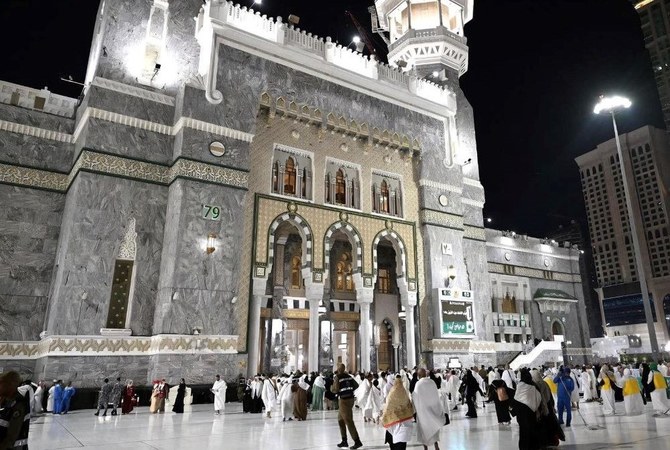MAKKAH: The General Authority for the Affairs of the Grand Mosque and the Prophet’s Mosque has assigned specific doors in the Grand Mosque to receive Umrah pilgrims during the holy month of Ramadan this year.
The doors administration, working together with the security authorities at the mosque, has opened 210 doors to prevent suffocation and overcrowding.
The Grand Mosque’s entrances and exits have been taken care of by the authority, with a focus on accommodating individuals with special needs.
The initiative is being carried out in collaboration with government agencies that work within the Grand Mosque.
Additionally, they can use Ajyad Staircase, Ajyad Bridge, Shubaika Staircase 65-66, King Fahd Stairway 91-92, staircase 84, side crossings 78-80 for exit, staircase 74, regular stairs 71, 73, 85, 88, King Fahd staircase, and doors 75-77, 81-83.
The Shubaika staircase is reserved for emergencies along with the King Abdulaziz Gate.
On the first floor, pilgrims can use King Fahd Gate, Umrah Gate, Zubair Gate, Ajyad Bridge, Shubaika Bridge, Othman Bridge, King Fahd Gate elevators.
On the second floor, they can use Al-Arqam Stairway elevators, Umrah Gate elevators, Ajyad Stairway elevators, Marwa Stairway elevators, and the roof for individuals with disabilities.
The authority has assigned specific doors and entrances for women to access the women’s prayer halls.
Additionally, there are designated entrances for individuals with special needs, such as Al-Salam Gate, King Abdullah Gate, and the Marwa Staircase elevators.
The main duties of the door staff and guards at each door are to stop bags and luggage from entering, prohibit all foods except coffee and dates, restrict cameras without permission, and manage crowds.
Above the doors, there are signs with important information. For instance, there are signs that say the Grand Mosque is full and nobody can enter, and there are green signs that mean it is permissible to enter the Grand Mosque.


